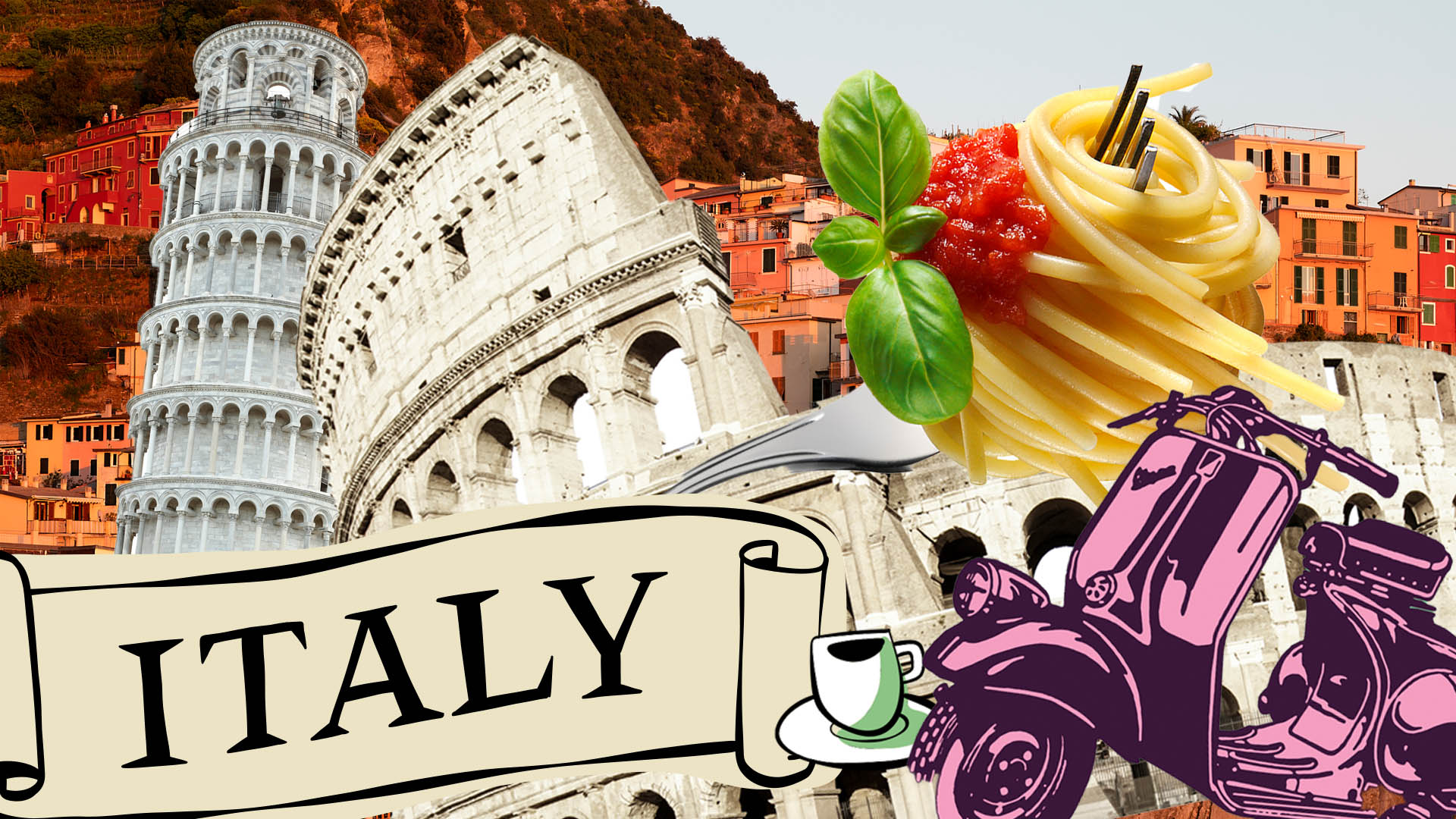
10 Tips for Traveling to Italy
A Little Planning Can Make Your Trip a Success

Food, culture, scenery, and history – the options for things to experience and see while traveling to Italy are endless. From beautiful countrysides and seashores, to Milan’s fashion, Sicilian vineyards, and 58 UNESCO World Heritage sites, including the ancient ruins of Pompeii, Italy has much to offer travelers.
Consider the following tips to help make planning and traveling to Italy easier, including knowing about any travel-related COVID-19 restrictions, as well as advice on how to prepare for the challenges of walking everyday while sightseeing. Consider these Italy travel tips to help make your Italian vacation not only easy to plan but also an enjoyable experience while there.
Find What You Need
Covid-19 Restrictions in Italy
Like many destinations around the world, Italy has relaxed its COVID-19 rules, including lifting pandemic-era entry restrictions. Italy no longer requires international travelers to show proof of vaccination, proof of recovery from the coronavirus or a negative test.
So, if you are traveling to Italy from the United States, you are no longer required to provide these documents. Be advised that the lifting of these restrictions could change if virus infection rates increase. The website of the airline you are flying on to Italy is typically your best source of information regarding any COVID-19 rule changes. Note that proof of vaccination for non-U.S. citizens traveling back to the United States is still in effect.
If you are using a tour operator while in Italy, check with them about their vaccination and testing requirements. They might require one or both for group excursions.
The U.S. Centers for Disease Control and Prevention confirms there are still cases of COVID-19 in Italy and is advising Americans to avoid travel to Italy if they are not up to date with the COVID-19 vaccines. Also, while masks are not required in Italy’s public spaces such as restaurants and museums, FFP2/KN95 masks are still mandatory inside all healthcare facilities (hospitals, nursing homes, doctor’s offices, etc.) until October 31, 2022.
If you suspect you have contracted the COVID-19 virus while traveling in Italy, you can get tested there. PCR and antigen tests are available for U.S. citizens. Test results are usually given within 72 hours. According to the U.S. Embassy and Consulates in Italy, at present in Italy, antigen tests cost approximately $20 while PCR tests cost approximately $70.Individuals who test positive in Italy will need to self-isolate between five-14 days, depending on the specifics of their case. The self-isolation will occur at the traveler’s own expense.
For Italy’s most up-to-date COVID-19 information, visit the U.S. Embassy and Consulates in Italy website.
Best Time of Year To Visit Italy
Italian summers can be hot. Winters in southern Italy are generally mild while winters in northern Italy can be cold and rainy. When to travel to Italy often depends on what you want to do and see. For example, if you want to go to the beaches in Sardinia or Sicily, beach visits are best done in the summer, whereas a summer trip to Rome might be daunting due to the heat and large crowds. As a travel journalist, my favorite month to travel to Italy is October. There are fewer crowds and the fall weather is comfortable. Autumn is also an ideal time to visit wine regions like Piedmont in northwest Italy, which is also famous in the fall for its truffle hunting season that runs from the end of October to December.
What Kind of Italian Experience You Want
Are you traveling to Italy for gastronomy? If so, Bologna is a good choice, or Naples for its pizza. Are you interested in the fashion and history of Milan or would a driving trip through the hills of Prosecco or Tuscany’s wine country be more appealing? If history and museums are on the agenda, consider Rome or Florence. Don’t forget that Italy has many islands that are worth visiting, including Capri, an island located in the Tyrrhenian Sea in the Campania region of Italy, and the Aeolian Islands north of Sicily.
How Much Italian You Will Need for A Trip To Italy
In Rome, many Italians speak English but in smaller villages, they might not. When traveling to Italy, knowing a few key phrases is helpful.
Book an Italian City Pass
With more people traveling as COVID-19 restrictions are lifted, finding restaurant, museum, and tour reservations can be hard. Consider booking any reservations or tours before your trip. You can also purchase train and ferry tickets in advance. Purchasing a City Pass might also be a good idea. For example, a Rome City Pass includes entry to the Vatican and the Vatican museums as well as the Sistine Chapel and the Colosseum.
When you have a City Pass you don’t have to worry about standing in long lines to purchase entry tickets. A City Pass also includes free use of a city’s Hop On Hop Off bus, which is helpful to ride if you get tired from walking.
Walking All Day in Italy
Italy can be challenging for visitors with mobility or health issues. For example, cars are not allowed in Venice so that city requires a lot of walking. Florence’s streets are narrow and one-way making car access limited. If walking is an issue, visiting Rome might be a good option. The city has several tour bus operators. Most museums in Rome have wheelchair access as do train stations.
If you do plan to walk while traveling in Italy, allot time in your itinerary to take several breaks. You can stop for a gelato, an espresso or a glass of wine. Also find out if your hotel has an elevator. Many hotels in smaller villages don’t.
Traveling by Train Around Italy
If you want to see more than one big city or area while in Italy, booking a train trip with Trenitalia, Italy’s national train operator, is recommended. For example, there are 10 daily trains between Turin and Rome, with stops in Milan, Bologna and Florence.
Vacation Rentals in Italy
For a personalized vacation experience, book a vacation rental in Italy and work with its owner to plan nearby excursions. Judi Cellini, who lives in Chicago, plans yearly trips to Italy with her friends and her daughter to Monferrato in northern Italy’s Piedmont region. There they stay at the historic Castello di Montalero, a restored hilltop villa with views of the Italian Alps, and take Italian cooking classes at the villa as well as tours of local attractions.
“Piedmont is cooking-centered but we do not cook every day,” says Cellini. “We also visit wineries, observe the harvest and go truffle hunting with the dogs!”
Money-saving Tips
Tipping at restaurants in Italy is not necessary. Restaurants add in a service charge to cover the tip. Many restaurants and hotels have apertivo hours, known in the United State as happy hours, with complimentary cocktails and food. If you are in a big city like Rome, you might want to avoid eating in the main city square. Restaurants in the square are usually overpriced. You will want to tip taxi drivers, rounding up to the nearest Euro.
Traveling to Italy Is Well Worth It
With so many things to do and see, traveling to Italy won’t disappoint. Whether you prefer the beaches of southern Italy, the history in larger cities like Rome, or the vineyards and cuisines in northern Italy, focusing your trip to Italy on one area or a few is doable, especially considering Italy’s robust intra-country rail system which can get you from city to city or region to region. Also consider working with a seasoned Italy travel service like Dream of Italy, which can help you plan a customized Italian vacation.
Buon viaggio! (Have a good trip!)



